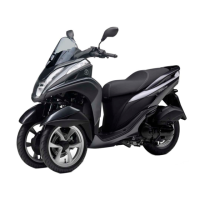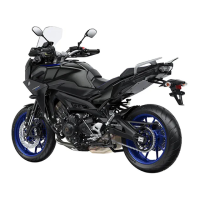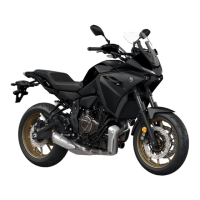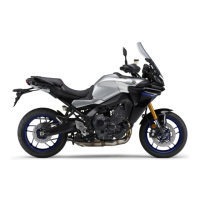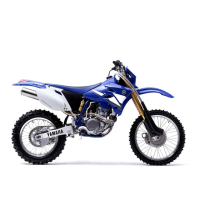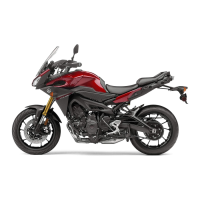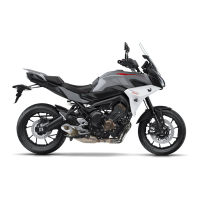Do you have a question about the Yamaha Tricity MW125 and is the answer not in the manual?
Owner's responsibilities for safe and proper operation of the vehicle.
Essential checks, general riding advice, and being conspicuous.
Importance and types of protective gear for riders and CO poisoning risks.
Guidelines for adding accessories or cargo and risks of modifications.
Instructions for transporting the vehicle and additional safe riding points.
Illustration and identification of major components on left and right sides.
Identification and location of all vehicle controls and instruments.
Operation of the main switch and steering lock mechanism.
Keyhole shutter, indicator lights, warning lights, and meter displays.
Fuel meter, clock, tripmeters, handlebar switches, and levers.
Fueling, catalytic converter, seat operation, and related warnings.
Passenger footrest, storage, luggage hook, sidestand, and DC connector.
Checks for fuel, engine oil, coolant, and front brake systems.
Checks for rear brake, throttle grip, cables, tires, and chassis fasteners.
Step-by-step instructions for starting the engine and beginning to ride.
How to control speed and perform safe braking maneuvers.
Tips for reducing fuel consumption and crucial engine break-in procedures.
Proper procedures for parking the vehicle safely.
Overview of maintenance charts and the owner's tool kit.
Procedures for engine oil, coolant, transmission oil, and air filters.
Checks for brake levers, pads, fluid, and system maintenance.
Checks for chassis fasteners, steering, wheel bearings, fork, and leaning system.
Procedures for tire inspection, pressure, and wheel checks.
Battery checks, fuse replacement, bulb replacement, and lighting checks.
Procedures for diagnosing and resolving common issues and engine overheating.
Guidelines and warnings for cleaning the vehicle, including special finishes.
Instructions for short-term and long-term vehicle storage.
Recording vehicle and engine identification numbers for registration and parts.
| Valves | 4 |
|---|---|
| Bore x Stroke | 52.0 mm x 58.7 mm |
| Compression Ratio | 11.2:1 |
| Maximum Power | 9.0 kW (12.2 PS) @ 7, 500 rpm |
| Fuel System | Fuel Injection |
| Ignition System | TCI |
| Starting System | Electric |
| Transmission | V-Belt Automatic |
| Rear Suspension | Unit Swing |
| Overall Length | 1, 980 mm |
| Overall Width | 750 mm |
| Overall Height | 1, 210 mm |
| Seat Height | 780 mm |
| Wheelbase | 1, 350 mm |
| Ground Clearance | 125 mm |
| Wet/Curb Weight | 164 kg |
| Engine Type | Liquid-cooled, 4-stroke, SOHC, 4-valve |
| Displacement | 124cc |
| Front Suspension | Telescopic forks |
| Front Brake | Hydraulic single disc, Ø 220 mm |
| Rear Brake | Hydraulic disc, Ø 220 mm |
| Rear Tyre | 110/90-12 |
| Fuel Tank Capacity | 7.2 liters |
| Front Tyre | 90/80-14 |
